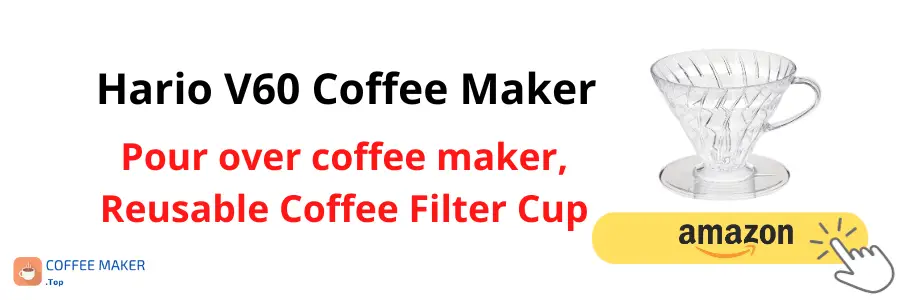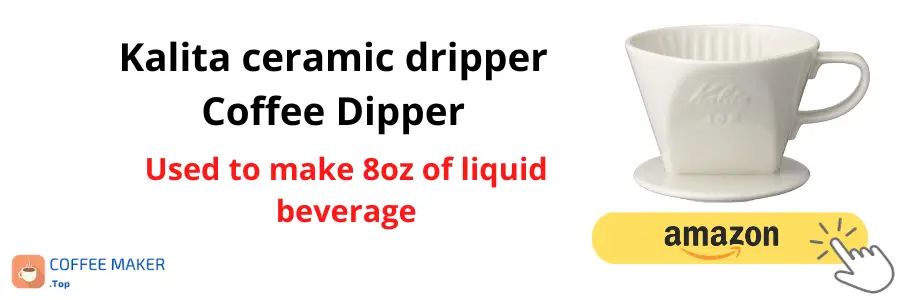The world of coffee is a vast universe teeming with various preparation techniques, and among them, filtered coffee has emerged as a continuously growing trend. While we often associate coffee with the intensity of espresso or the comforting aroma of an Italian moka pot, filtered coffee offers an entirely different experience.
In this article, I will immerse you in the magical world of filtered coffee, exploring its definition, preparation process, differences from espresso, and the intriguing aspect of caffeine. As we unravel the secrets of this technique, you will discover why filtered coffee is gaining recognition worldwide and how you can brew your perfect cup of filtered coffee.
What is filter coffee or manual pour-over?
Filtered coffee is a percolation method known for its precision and grace. In this technique, hot water is meticulously poured over ground coffee, allowing it to flow through a filter, which can be made of paper, cloth, metal, or other materials. Notably, the coffee grounds used in this process fall between—coarser than espresso and finer than those required for immersion methods. This delicate balance is essential for achieving the perfect cup of coffee.
Controlling water temperature, extraction time, and the coffee-to-water ratio are pivotal aspects of the filtered coffee process, and we’ll delve into these elements in greater detail later on.
What is the origin of filtered coffee?
Filtered coffee is an ever-evolving treasure, a brewing technique with no geographical boundaries. Over the years, this method has been shaped and perfected by countless cultures worldwide. Unlike many other coffee brewing methods that can be traced back to a specific location or history, filtered coffee has found a home everywhere.
Note: When it comes to filter papers, we can’t forget Melitta Bentz, the inventive mind from Germany who, in 1908, patented the use of paper filters, laying the foundation for the filtered coffee we know today.
From the hills of Latin America to the coffee shops of Europe to the streets of Asia, filtered coffee has established its presence in various forms and variations. Each region and culture has brought its distinctive touch to the process, resulting in a global tradition that is not only tasty but also a symbol of the universality of the love of coffee.
How to prepare filter coffee
Have you ever wondered about the art of crafting the perfect cup of filter coffee? Let’s dive into the world of this beloved brewing method and explore the essential aspects that make it a true coffee enthusiast’s delight.
Brewing essentials
Creating a delicious cup of filter coffee is both a science and an art. It all begins with the tools and ingredients at your disposal. When making filter coffee, it’s crucial to consider:
- Coffee beans: Start with high-quality coffee beans. The variety, roast level, and freshness of your beans are pivotal in flavour. Just as a painter selects their palette, a coffee enthusiast chooses their beans wisely.
- Grind size: The grind size is akin to choosing the right brushstroke for your painting. Opt for a medium grind for filter coffee – not too fine or coarse. This allows for an even extraction.
- Water quality: Water quality is to coffee what a canvas is to a painter. Clean, fresh water free from impurities enhances the coffee’s taste. Ideally, use filtered water or natural spring water.
- Brewing equipment: Your choice of brewing equipment impacts the flavour and aroma. Popular options for filter coffee include pour-over cones like the V60, drip machines, or classic coffee makers. Each method imparts a unique character to the brew.
Brewing variables
To truly master the art of filter coffee, you need to grasp the variables that influence the brewing process. The key variables to consider are:
- Coffee-to-water ratio: Just as a painter mixes their colours precisely, you must find the ideal coffee-to-water ratio. A common starting point is one to two tablespoons of coffee for every six ounces of water. Adjust to your taste.
- Water temperature: Like a chef with precise cooking temperatures, a coffee connoisseur pays attention to water temperature. The ideal range for water temperature is around 195-205°F (90-96°C). This range extracts the coffee’s full flavours without scalding or under-extracting.
- Brew time: Timing is essential. The duration of contact between water and coffee grounds influences the extraction. Aim for a brew time of 3-4 minutes for filter coffee. Too short, and your coffee might be underwhelming; too long, and it could become bitter.
- Brewing technique: Maintaining a steady pour or ensuring an even water distribution is key to a balanced extraction.
By understanding and experimenting with these variables, you can create a personalized masterpiece in every cup of filter coffee.
My recipe for the perfect Hario V60 filtered coffee
With this step-by-step guide, you can craft a top-quality coffee using the Hario V60. I’ll break down each aspect of the process to make it easy for you to replicate at home.
Customizing your coffee
Feel free to experiment and adjust certain variables to tailor the final brew to your preferences. One key variable to consider is the grind size: coarser grinds should be paired with slower pouring, while finer grinds require a quicker pour.
- Begin by unfolding a Hario V60 filter along the crease, ensuring it remains open and can be placed into the cone.
- Run hot filtered water once the filter is in position to remove impurities and eliminate any papery taste. This step also preheats the coffee maker, contributing to a better extraction. Be sure to discard this water afterwards.
- Place 30 grams of ground coffee into the coffee maker and give it a gentle shake to level the coffee bed.
- Position the Hario V60 on a scale and start the timer.
- Gradually pour 60 grams of filtered water (equivalent to twice the weight of coffee) at 198ºF and allow it to steep for 45 seconds. Using a spoon can help ensure even saturation of the coffee.
- After 45 seconds, add the remaining 60 grams of water over the next 45 seconds. This is the well-known blooming or pre-infusion process, during which the coffee releases its full aroma and carbon dioxide. Your coffee is now ready for extraction.
- At around 1 minute and 15 seconds, you should pour the rest of the water within 30 seconds to reach 300 grams. This means that the scale should display 300 grams.
- Add the remaining water over the next 30 seconds until you reach 600 grams. Ensure you pour the water in a circular motion and gradually facilitate the brewing process.
- The entire brew should take approximately three and a half minutes to complete. A flat coffee bed indicates a successful extraction with minimal grounds adhering to the filter walls.
What does filtered coffee taste like?
Intensity and texture: The texture of filtered coffee is entirely different from that of espresso. It is lighter and more delicate, resembling a tea infusion. It lacks the density and typical creaminess of espresso.
Aromatic profile: High-quality filtered coffee, owing to its unique extraction process, provides access to a more complex aromatic profile, allowing you to uncover nuanced flavours that are harder to discern in espresso.
Unique experience: Whether you prepare it in the comfort of your home or enjoy it at a specialised café such as Taste, filtered coffee is more than just a beverage. It evolves into a genuine experience that encourages you to unwind, take your time, and alter your traditional coffee perspective.
The top 3 manual pour-over coffee makers
Among the numerous options available in the market, three stand out for their popularity and quality: the Hario V60, the Kalita Wave, and the Chemex. Each of them offers a unique coffee brewing experience, and here are their pros and cons to help you make an informed decision.
Top 1. Hario V60
Pros:
- Precise control: The Hario V60 is renowned for its conical shape and interior ridges, allowing meticulous control over water flow and coffee extraction. It is an ideal choice for coffee connoisseurs experimenting with different flavour profiles.
- Wide availability of filters: Filters specifically designed for the V60 are readily available, making coffee preparation a breeze.
Cons:
- Requires skill: The Hario V60 can be challenging for beginners, as controlling water flow can be tricky. Practice is necessary to achieve consistent results.
Top 2. Kalita wave
Pros:
- Even extraction: The flat design of the Kalita Wave, coupled with three small holes at the base, permits even and controlled extraction. It suits those seeking a balanced flavour and wanting to worry less about their technique.
- Beginner-friendly: The Kalita Wave is more forgiving of errors than the V60, making it an excellent choice for novices.
Cons:
- Limited filter variety: Although the Kalita Wave uses specific filters, these may be less common in some regions than V60 filters.
Top 3. Chemex
Pros:
- Elegant and functional design: The Chemex is known for its distinctive hourglass design, which is aesthetically pleasing and serves as a serving carafe. It’s ideal for sharing coffee with friends and family.
- Clean and clear coffee: Chemex’s thick paper filters remove sediments and oils, producing a clean, smooth coffee with a mild and mellow taste.
Cons:
- Longer preparation time: Due to its design and thick filters, the Chemex may require more time to brew coffee. This might not be suitable for those looking for a quick morning cup.



